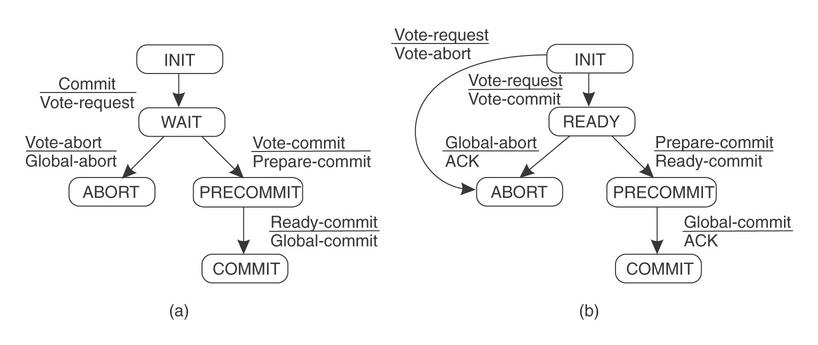I am trying to understand how three-phase commit avoids blocking
Consider the following two failure scenarios:
Scenario 1: In phase 2 the coordinator sends preCommit messages to all cohorts and has gotten an ack from all except cohort A. Network problems prevent cohort A from receiving the coordinator's preCommit message. Cohort A times out waiting for the preCommit message and chooses to abort. Then both the coordinator and cohort A crash.
Scenario 2: The protocol reaches phase 3. The coordinator sends a doCommit message to cohort A. But before it can send more doCommit messages the coordinator crashes. Cohort A commits its part of the transaction then crashes.
As far as I can tell the remaining cohorts have the exact same state at the end of scenario 1 and scenario 2. So when a recovery coordinator steps in how can it find out from the remaining cohorts whether we are in scenario 1 and abort or we are in scenario 2 and commit and thus avoid blocking?

